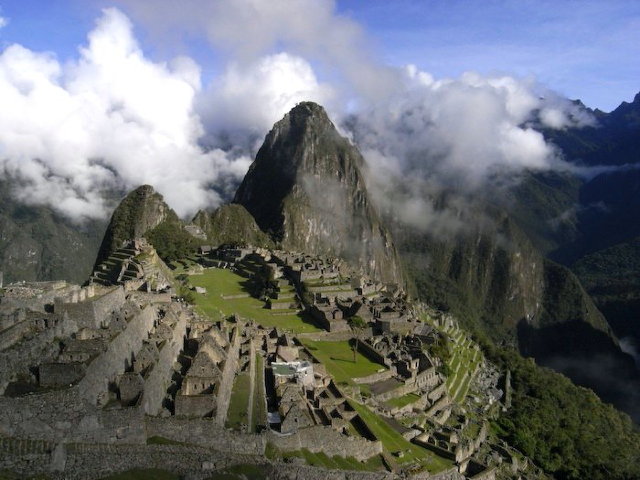Feature: Honoring Inca Engineering

http://www.flickr.com/photos/kudumomo/ | CC BY 2.0
15th-century Machu Picchu displays a mastery of design. — from the December 2008 issue of Prism magazine, by Henry Petroski
Last July, I traveled in Peru with a delegation from the American Society of Civil Engineers. Among our objectives was the dedication of a bronze plaque recognizing the archaeological site of Machu Picchu as an International Historic Civil Engineering Landmark.
Our base of operations was Cusco, the Inca capital that in the 16th century was invaded by the Spanish conquistadors. This ancient city, located 11,000 feet up in the Andes, is a living museum of Inca stone walls topped by Spanish arcades.
Machu Picchu, 3,000 feet lower in elevation than Cusco, is located about 70 miles northwest of that city. Even today, the site is difficult to get to, with an hours-long bus and narrow-gauge railroad ride from Cusco providing one of the few convenient means of access to the town of Aguas Calientes. From there, a breathtaking bus ride up a narrow switchback dirt road takes tourists the final 1,500 feet up to the fabled site.
The wetter and milder climate of Machu Picchu made it an ideal site at which to establish a sacred city and royal retreat. Though now widely known for its visually striking situation upon the high, steep-sided ridge, Machu Picchu owes the success of its location and the survival of its well-preserved ruins to engineering thinking, planning, and design.
In earlier times, Machu Picchu was accessed via the Inca Trail, which meant a weeklong journey from Cusco. In order for such a remote site to become a functioning retreat, it was necessary that it have, among other things, a reliable supply of water and a convenient source of building materials.
The mountainous terrain at Machu Picchu proved to be no impediment. The highly fractured rock of the area channeled rainfall into the groundwater, which in turn fed a spring with output adequate to provide for the needs of the emperor, known as the Inca, and his entourage. Also, the already broken-up rock was relatively easy to split and work into manageable building blocks.
Construction on what would come to be called “the lost city of the Inca” was begun around 1450. The site was flourishing when the Spanish invasion of the empire occurred in 1532. Because of its remoteness and lack of easy access, however, Machu Picchu did not become known to the Spanish conquistadors, which explains in part why it remained so paradigmatically Incan. The site is believed to have ceased to function normally by 1540, and it soon was abandoned and disappeared beneath the growth of what is effectively the Amazon rain forest.
The “lost city” was “rediscovered” by the Yale historian and explorer Hiram Bingham in 1911, he being led to it by local people to whom it was never really lost. The following year, his team cleared the site, and in 1913, Bingham introduced Machu Picchu to the world at large through an extensive article in National Geographic Magazine.
Though Machu Picchu is generally known as an archaeological site of great cultural significance, Bingham recognized that the city owed its success to the fact that “the Incas were good engineers.” The steep and unstable slopes on which it is built would have long ago given way had the terrain not been terraced with walls underlain by solid foundations and a sophisticated drainage system.
The water from the main spring, which is located almost a half mile above the site’s agricultural terraces and royal sector, is carried by a masterful canal that brings fresh water first to the royal residence and then down through a series of graceful and effective fountains to the lower levels. It was Machu Picchu’s remarkable infrastructure that led ASCE to honor this significant site as a historic civil engineering landmark.
Henry Petroski, the Aleksandar S. Vesic Professor of Civil Engineering and a professor of history at Duke University, is the author of 14 books on engineering and design. He chairs the History and Heritage Committee of the American Society of Civil Engineers, which oversees the society’s Historic Civil Engineering Landmark Program.
Read the original article in Prism online
Filed under: Special Features








